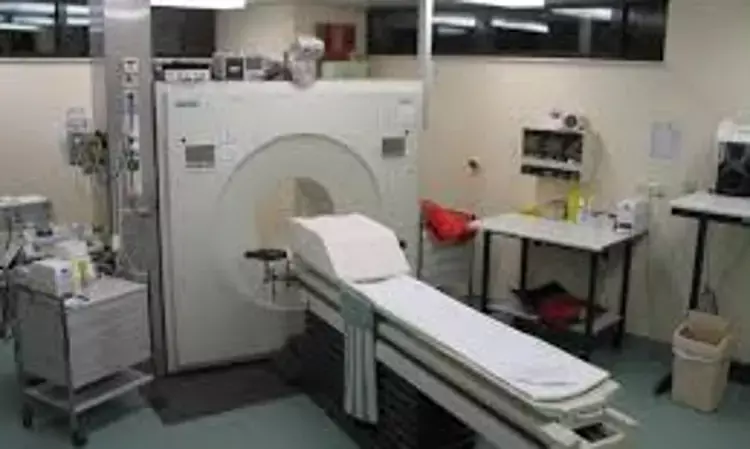- Home
- Medical news & Guidelines
- Anesthesiology
- Cardiology and CTVS
- Critical Care
- Dentistry
- Dermatology
- Diabetes and Endocrinology
- ENT
- Gastroenterology
- Medicine
- Nephrology
- Neurology
- Obstretics-Gynaecology
- Oncology
- Ophthalmology
- Orthopaedics
- Pediatrics-Neonatology
- Psychiatry
- Pulmonology
- Radiology
- Surgery
- Urology
- Laboratory Medicine
- Diet
- Nursing
- Paramedical
- Physiotherapy
- Health news
- Fact Check
- Bone Health Fact Check
- Brain Health Fact Check
- Cancer Related Fact Check
- Child Care Fact Check
- Dental and oral health fact check
- Diabetes and metabolic health fact check
- Diet and Nutrition Fact Check
- Eye and ENT Care Fact Check
- Fitness fact check
- Gut health fact check
- Heart health fact check
- Kidney health fact check
- Medical education fact check
- Men's health fact check
- Respiratory fact check
- Skin and hair care fact check
- Vaccine and Immunization fact check
- Women's health fact check
- AYUSH
- State News
- Andaman and Nicobar Islands
- Andhra Pradesh
- Arunachal Pradesh
- Assam
- Bihar
- Chandigarh
- Chattisgarh
- Dadra and Nagar Haveli
- Daman and Diu
- Delhi
- Goa
- Gujarat
- Haryana
- Himachal Pradesh
- Jammu & Kashmir
- Jharkhand
- Karnataka
- Kerala
- Ladakh
- Lakshadweep
- Madhya Pradesh
- Maharashtra
- Manipur
- Meghalaya
- Mizoram
- Nagaland
- Odisha
- Puducherry
- Punjab
- Rajasthan
- Sikkim
- Tamil Nadu
- Telangana
- Tripura
- Uttar Pradesh
- Uttrakhand
- West Bengal
- Medical Education
- Industry
PET tracer shows promise in imaging high cholesterol activity: Study

PET tracer shows promise in imaging high cholesterol activity, according to a recent study published in the Journal of Nuclear Medicine
Imaging of cholesterol utilization is possible with the iodine-131 scintiscanning/SPECT agent, NP-59. This agent provided a non-invasive measure of adrenal function and steroid synthesis. However, iodine isotopes resulted in poor resolution, manufacturing challenges, and high radiation dosimetry to patients that have limited their use and clinical impact. A fluorine-18 analogue would address these shortcomings while retaining the ability to image cholesterol utilization. Purpose: The goal of this study was to prepare and evaluate a fluorine-18 analogue of NP-59 to serve as a PET imaging agent for functional imaging of the adrenal glands based on cholesterol use. Previous attempts to prepare such an analogue of NP-59 have proven elusive. Preclinical and clinical evaluation could be carried out once the new fluorine analogue of NP-59 production was established.
The recent development of a new reagent for fluorination along with an improved route to the NP-59 precursor allowed for the preparation of a fluorine analogue of NP-59, FNP-59. The radiochemistry for the fluorine-18 radiolabeled 18F-FNP-59 is described, rodent radiation dosimetry studies and in vivo imaging in New Zealand rabbits was carried out. After in vivo toxicity studies, an IND approval was obtained and the first in human images with dosimetry using the agent were acquired.
Results:
In vivo toxicity studies demonstrated that FNP-59 is safe for use at intended dose. Biodistribution studies with 18F-FNP-59 demonstrated a similar pharmacokinetic profile to NP-59, but with decreased radiation exposure. In vivo animal images demonstrate expected uptake in tissues that utilize cholesterol: gallbladder, liver, and adrenal glands. First in human images had no adverse events and demonstrated accumulation in target tissues (liver and adrenal glands). Manipulation of uptake was also demonstrated with patients that received cosyntropin, resulting in improved uptake.
Thus, 18F-FNP-59 provided higher resolution images, with lower radiation dose to the subjects. It has the potential to provide a non-invasive test for patients with adrenocortical diseases.
Reference:
Development of Flourinated NP-59: A Revival of Cholesterol Utilization Imaging with PET by Allen L Brooks, et al. published in the Journal of Nuclear Medicine.
DOI: https://doi.org/10.2967/jnumed.122.263864
Keywords:
PET, tracer, imaging, high, cholesterol, activity, Journal of Nuclear Medicine, Development, Flourinated, NP-59, Revival, Cholesterol, Utilization, Allen L Brooks, Wade Winton, Jenelle Stauff, Janna Arteaga, Bradford Henderson, Jeremy Niedbala, Peter Scott and Benjamin L Viglianti
Dr. Shravani Dali has completed her BDS from Pravara institute of medical sciences, loni. Following which she extensively worked in the healthcare sector for 2+ years. She has been actively involved in writing blogs in field of health and wellness. Currently she is pursuing her Masters of public health-health administration from Tata institute of social sciences. She can be contacted at editorial@medicaldialogues.in.
Dr Kamal Kant Kohli-MBBS, DTCD- a chest specialist with more than 30 years of practice and a flair for writing clinical articles, Dr Kamal Kant Kohli joined Medical Dialogues as a Chief Editor of Medical News. Besides writing articles, as an editor, he proofreads and verifies all the medical content published on Medical Dialogues including those coming from journals, studies,medical conferences,guidelines etc. Email: drkohli@medicaldialogues.in. Contact no. 011-43720751


